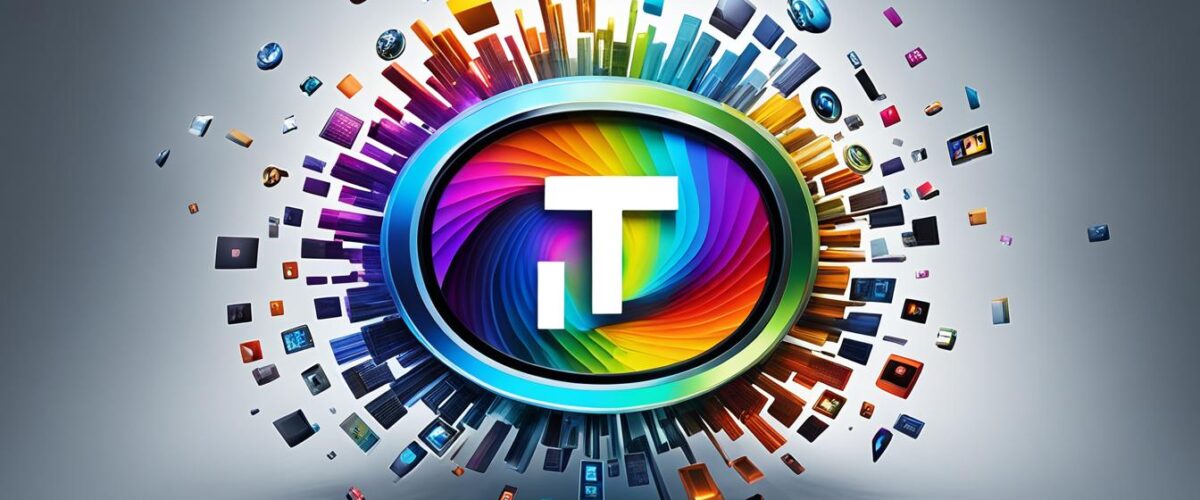Did you know that as of 2020, the global IPTV market was valued at a staggering $40 billion and is projected to reach $117 billion by 2027? This astounding growth demonstrates the remarkable impact and widespread adoption of Internet Protocol Television (IPTV) in our modern media landscape.
IPTV has completely transformed the way we consume and interact with media content. Gone are the days when we had to rely on traditional cable or satellite TV services with limited options. With IPTV, we have access to a vast array of streaming TV, online television, and video on demand services, all delivered through digital media and internet protocol technology.
In this article, we will take a deep dive into the rich history and evolution of IPTV, exploring its genesis, early challenges and innovations, the rise of on-demand and personalized viewing experiences, mainstream adoption, and its future as a harbinger of innovation and digital transformation.
Key Takeaways:
- IPTV has experienced explosive growth, with the global market projected to reach $117 billion by 2027.
- IPTV offers a wide range of streaming TV, online television, and video on demand services.
- IPTV has revolutionized media consumption by providing on-demand and personalized viewing experiences.
- Major telecommunication companies, cable operators, and Over-The-Top (OTT) providers have embraced IPTV.
- The future of IPTV holds advancements such as 4K and 8K resolution, artificial intelligence, virtual reality, and 5G networks.
The Genesis of IPTV: Pioneering the Future of Television
The origins of IPTV can be traced back to the convergence of television and the internet in the late 20th century. This innovative technology emerged as a result of bold experiments that aimed to blend the traditional broadcasting model with IP networks.
IPTV, or Internet Protocol Television, revolutionized the way we consume media content by delivering television programming over IP networks. Unlike traditional broadcasting that relied on cable or satellite infrastructure, IPTV leveraged the power of the internet to transmit audio and video data.
Early pioneers recognized the immense potential of IPTV, realizing that it could disrupt the existing broadcast model. They saw the opportunity to provide viewers with a more personalized and interactive television experience, while also offering the flexibility of accessing content on-demand.
With the advent of broadband internet and advancements in IP technology, IPTV gradually evolved from experimental projects to a commercially feasible solution. Innovators pushed the boundaries of what was technically achievable, paving the way for the widespread adoption of IPTV.
Today, IPTV has become a mainstream technology embraced by telecommunication companies, cable operators, and over-the-top (OTT) providers. It has revolutionized the way we engage with digital media, offering a diverse range of channels and content that cater to individual preferences and viewing habits.
This section will delve deeper into the history of IPTV, exploring its early development, the crucial role of IP networks, and how it challenged the traditional broadcast model.
The Birth of IPTV: A Convergence of Technologies
In the early days, IPTV was a convergence of television and internet technologies. The growing accessibility of IP networks and the increasing popularity of digital media provided the foundation for the birth of IPTV.
During this time, visionaries envisioned a future where TV content would be accessible through internet-based transmissions rather than traditional cable or satellite signals. The broadcast model was being reimagined, promising greater convenience and control for viewers.
By the late 1990s, pioneering companies began experimenting with IPTV technology, exploring the feasibility of delivering television programming over IP networks. These experiments laid the groundwork for the commercialization of IPTV and shaped the future of television consumption.
Challenging the Broadcast Model: Television Over IP Networks
IPTV disrupted the traditional broadcast model by delivering television content over IP networks. Instead of relying on dedicated cable or satellite infrastructure, IPTV utilized the existing internet infrastructure to transmit television signals.
This shift allowed for greater flexibility, as viewers could access television programming on a wide range of devices connected to IP networks, such as computers, smartphones, and smart TVs. IPTV eliminated the limitations imposed by physical cables and enabled the delivery of high-quality content to any location with internet connectivity.
Furthermore, the broadcast model limited viewers to predefined schedules, with little room for personalization. IPTV introduced the concept of on-demand viewing, empowering viewers to choose what they want to watch, when they want to watch it.
The integration of IP networks with television expanded the possibilities for content delivery, customization, and interactivity. IPTV brought the power of the internet to the television screen, opening up new horizons for the future of the medium.

Continuing the journey of IPTV, the next section will explore the early challenges faced by this groundbreaking technology and the innovations that paved the way for its mainstream adoption.
Early Challenges and Innovations: Navigating the Road to Mainstream Adoption
As Internet Protocol Television (IPTV) emerged as a groundbreaking technology, it encountered several hurdles on its path to mainstream adoption. These challenges included limited bandwidth, interoperability issues, and regulatory hurdles.
**Limited bandwidth** was a significant obstacle in the early years of IPTV. The transmission of large amounts of video content over the internet required substantial bandwidth, which was not readily available to all users. This limitation affected the quality and reliability of IPTV services.
**Interoperability issues** were another concern faced by IPTV providers. The diverse range of devices and software platforms posed compatibility challenges, making it difficult to ensure seamless streaming experiences for users across various devices and operating systems.
**Regulatory hurdles** also played a role in the initial stages of IPTV adoption. Different regions and countries had specific regulations governing the distribution and licensing of television content over IP networks. Adhering to these regulations and obtaining the necessary permissions added complexity to the development and deployment of IPTV services.
However, the IPTV industry responded to these challenges through continuous innovation and advancements in key areas such as **video compression**, **content delivery**, and **user interface design**.
**Video compression techniques** were refined to optimize the delivery of high-quality video content within the constraints of limited bandwidth. Efficient encoding and decoding algorithms were developed to compress video files while preserving their visual fidelity. This breakthrough allowed for smoother streaming experiences and reduced buffering times.
**Content delivery** mechanisms were also enhanced to overcome the challenges of limited bandwidth. Innovative techniques, such as adaptive streaming, dynamically adjusted the quality of video streams based on the viewer’s available bandwidth, ensuring uninterrupted playback and minimizing disruptions.
**User interface design** underwent significant transformation to improve the accessibility and usability of IPTV services. Intuitive interfaces were developed, enabling viewers to navigate through channels, search for content, and personalize their viewing experience easily.
This relentless pursuit of innovation and the ability to overcome early challenges propelled IPTV into the mainstream, enabling it to become a viable alternative to traditional cable and satellite TV services.
The Rise of On-Demand and Personalized Viewing Experiences
One of the defining features of IPTV is its support for on-demand and personalized viewing experiences. With IPTV, viewers have the freedom to access content whenever and wherever they choose, enhancing their convenience and flexibility.
Whether you want to stream live sports events or indulge in a binge-watching session of your favorite shows, IPTV offers an unprecedented level of control over your viewing habits. Gone are the days of waiting for scheduled programming or being tied to your TV at specific times. With on-demand content, you can watch what you want, when you want.
Imagine being able to catch every thrilling moment of a live sports event, no matter where you are. IPTV allows you to stream live sports directly to your device, so you never miss a single play. Whether you’re at home, on the go, or even traveling, IPTV ensures you stay connected to the sports action that matters most to you.
And what about those moments when you just want to escape into a world of entertainment? IPTV lets you binge-watch your favorite shows, allowing you to watch multiple episodes back-to-back without any interruptions. Say goodbye to cliffhangers and waiting anxiously for the next episode. With IPTV, you have the power to decide when to press play and when to pause.
With the rise of on-demand and personalized viewing experiences, IPTV has revolutionized the way we consume media. It puts the viewer in control, offering a seamless and tailored entertainment experience that fits perfectly into our busy lives.
Mainstream Adoption and Market Disruption: Redefining the Television Landscape
Over the past decade, Internet Protocol Television (IPTV) has undergone a remarkable transformation, transitioning from a niche technology to a mainstream entertainment platform. This growth can be attributed to the widespread adoption of IPTV by major telecommunications companies, cable operators, and over-the-top (OTT) providers.
Telecommunications companies, known for their expertise in delivering reliable connectivity, recognize the immense potential of IPTV in redefining the TV landscape. They have strategically integrated IPTV services into their offerings, allowing customers to access subscription-based and ad-supported platforms effortlessly.
Cable operators, in an effort to maintain their market share, have also embraced IPTV as an alternative to traditional cable TV. By leveraging IPTV, these operators can offer customers a broader range of channels and content, enhancing the viewing experience.
Alongside telecommunications companies and cable operators, OTT providers have played a pivotal role in the mainstream adoption of IPTV. Over-the-top services deliver video content directly to viewers over the internet, bypassing traditional methods of content distribution. Streaming platforms like Netflix, Amazon Prime Video, and Hulu have capitalized on the growing demand for on-demand and personalized viewing experiences, captivated audiences through smart TVs, streaming devices, and mobile applications.
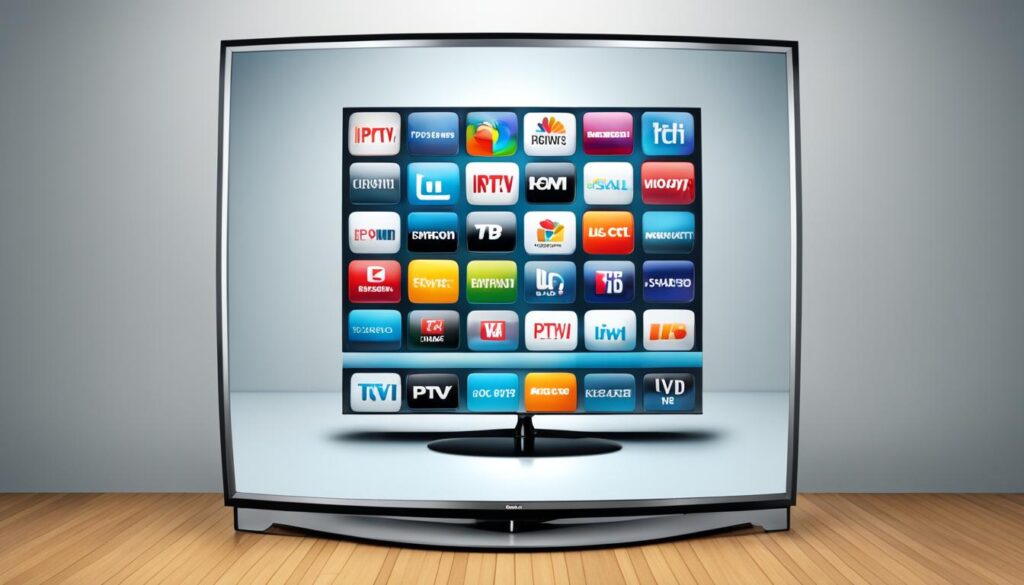
It is worth noting that smart TVs, streaming devices, and mobile applications have acted as catalysts, further accelerating the adoption of IPTV. Smart TVs enable users to access IPTV services directly on their televisions, eliminating the need for additional devices. Streaming devices such as Roku, Amazon Fire TV, and Apple TV provide seamless integration with popular streaming applications, making entertainment more accessible than ever. Mobile applications, designed for smartphones and tablets, have empowered users to enjoy IPTV on the go, ensuring uninterrupted entertainment regardless of location.
This widespread adoption of IPTV across various sectors has revolutionized the way we consume television content. The television landscape has undergone a significant shift, as consumers now have unprecedented control over what, when, and how they watch their favorite shows and movies.
Comparison of Telecommunications Companies, Cable Operators, and OTT Providers
| Telecommunications Companies | Cable Operators | OTT Providers |
|---|---|---|
| Offer subscription-based and ad-supported IPTV services | Embrace IPTV as an alternative to traditional cable TV | Deliver on-demand and personalized viewing experiences |
| Provide reliable connectivity and seamless integration | Expand channel offerings for enhanced viewing experience | Stream content directly to viewers over the internet |
| Utilize smart TVs, streaming devices, and mobile apps for easy access | Cater to the growing demand for convenience and flexibility |
The Future of IPTV: Embracing Innovation and Digital Transformation
The future of IPTV is an exciting landscape of technological advancements and digital transformation. As streaming technology continues to evolve, IPTV is poised to deliver even more immersive and high-quality entertainment experiences. Let’s explore some of the key innovations that will shape the future of IPTV.
Streaming Technology Advancements
Streaming technology advancements are at the forefront of IPTV’s future. With the rise of high-speed internet connectivity, IPTV platforms can deliver content seamlessly to viewers’ devices. The development of robust streaming protocols and efficient codecs ensures that viewers can enjoy smooth playback and uninterrupted streaming experiences.
Enhanced Visuals: 4K and 8K Resolution, High Dynamic Range (HDR)
One of the most notable advancements in IPTV is the adoption of higher resolutions like 4K and 8K. These ultra-high-definition resolutions offer incredibly sharp and detailed visuals, bringing content to life with stunning clarity. Coupled with high dynamic range (HDR) technology, which enhances contrast and color accuracy, viewers can expect a truly immersive and visually captivating experience.
Revolutionizing Entertainment with Artificial Intelligence (AI)
Artificial intelligence (AI) is set to revolutionize the way we consume and interact with IPTV content. AI-powered recommendation engines can analyze viewers’ preferences, behavior, and patterns to offer personalized content suggestions. By understanding individual tastes and preferences, IPTV platforms can curate tailored content catalogs, ensuring that viewers always discover compelling shows and movies.
Virtual Reality (VR) and Interactive Experiences
IPTV’s future holds exciting possibilities for virtual reality (VR) and interactive experiences. VR technology allows viewers to immerse themselves in virtual worlds and enjoy a truly captivating and lifelike experience. Whether it’s exploring virtual environments or participating in interactive gaming, the integration of VR with IPTV opens up endless opportunities for engaging and interactive entertainment.
The Power of 5G Networks
The advent of 5G networks will revolutionize IPTV by providing faster and more reliable internet connectivity. With 5G’s lightning-fast speeds and minimal latency, viewers can enjoy instant access to on-demand content, seamless streaming, and real-time interactive features. 5G networks will enable IPTV to reach new heights of performance, making it an integral part of our digital lives.
As IPTV continues to embrace these technological advancements and digital transformations, viewers can anticipate a future where entertainment is more immersive, personalized, and seamless than ever before. By staying at the forefront of streaming technology, IPTV is shaping the way we consume and experience media, unlocking new dimensions of entertainment possibilities.
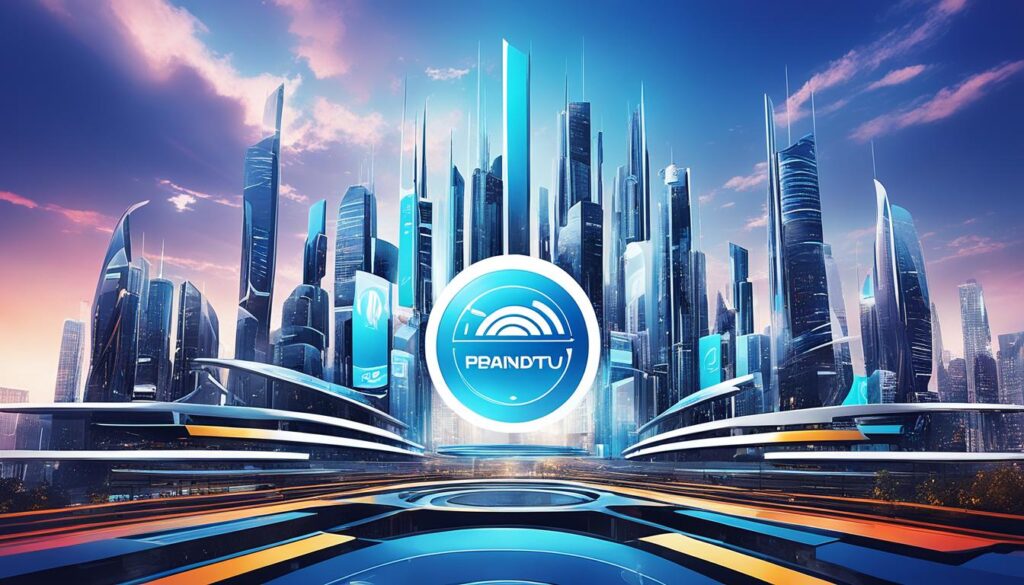
Stay tuned for the next section where we will explore the benefits of embracing the IPTV revolution and how StreamUtopia IPTV is revolutionizing media consumption.
Embracing the IPTV Revolution
Unlock endless entertainment possibilities with StreamUtopia IPTV subscription services. Elevate your viewing experience with a diverse range of channels and content, starting at just $11.99. Subscribe now and immerse yourself in a world of seamless streaming bliss.
Experience the future of television consumption with StreamUtopia IPTV. Our subscription services provide a diverse range of channels and content to cater to every viewer’s preferences. From live sports events to the latest movies and TV shows, StreamUtopia offers a comprehensive collection of entertainment options.
With StreamUtopia IPTV, you can enjoy a seamless streaming bliss like never before. Say goodbye to interruptions and buffering, and indulge in uninterrupted streaming of your favorite programs. Our advanced streaming technology ensures a smooth and flawless viewing experience, allowing you to immerse yourself in the world of your favorite content.
Why Choose StreamUtopia IPTV?
- Extensive Channel Selection: Access a wide variety of channels, including sports, movies, documentaries, news, and more.
- On-Demand Content: Enjoy the flexibility of accessing your favorite shows and movies whenever you want.
- Affordable Pricing Plans: Starting at just $11.99, StreamUtopia offers cost-effective subscription options to fit every budget.
- User-Friendly Interface: Navigate through our intuitive user interface to find and stream your preferred content effortlessly.
- Reliable Service: Experience uninterrupted streaming with our reliable and stable IPTV platform.
Join the millions of satisfied subscribers who are already embracing the future of television consumption with StreamUtopia IPTV. Sign up today and enjoy a diverse range of channels, a seamless streaming experience, and a world of entertainment at your fingertips.
Subscribe now and embark on an immersive journey into the world of StreamUtopia IPTV.
| Subscription Plan | Price | Number of Channels |
|---|---|---|
| Basic | $11.99/month | 200+ |
| Standard | $19.99/month | 500+ |
| Premium | $29.99/month | 1000+ |
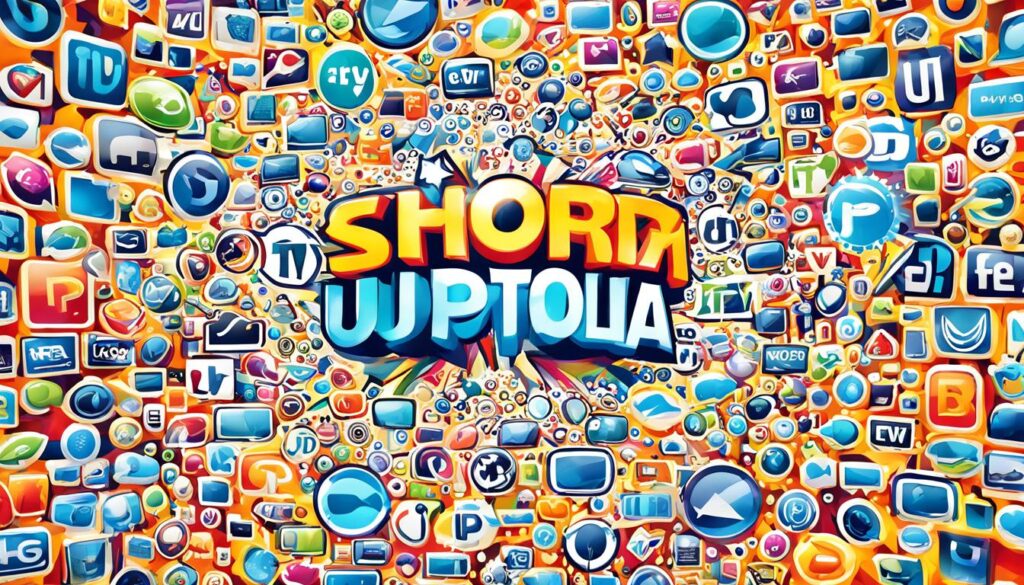
The Decline of Traditional Cable TV
Traditional cable TV has experienced a significant decline in recent years, with viewers increasingly seeking alternative options for their entertainment needs. This decline can be attributed to several key factors that have made traditional cable TV less appealing to consumers.
High Cost
One of the primary reasons for the decline of traditional cable TV is its high cost. Cable TV subscription fees have continued to rise, placing a financial burden on consumers. Many viewers are no longer willing to pay exorbitant prices for a vast number of channels they never watch. This has led to a shift toward more affordable and flexible alternatives.
Subscription Packages
Another factor contributing to the decline of traditional cable TV is the limited choice and lack of personalization offered by subscription packages. Cable TV providers often bundle channels together, forcing customers to pay for channels they have no interest in. This can be frustrating for viewers who want more control over their content selection.
Lack of Personalization
Cable TV also falls short in terms of personalization options. Viewers want the freedom to choose the content they want to watch, when and where they want it. Traditional cable TV lacks the level of personalization and on-demand access that viewers now expect. This has prompted many consumers to explore alternative platforms that offer greater flexibility and customization.
As a result of these factors, more and more viewers are turning to IPTV (Internet Protocol Television) for their entertainment needs. IPTV offers on-demand access to a wide range of content, allowing viewers to select what they want to watch at any given time. Additionally, IPTV providers often offer more affordable pricing plans, giving consumers greater value for their money.
IPTV’s decline presents new opportunities for viewers to embrace the future of entertainment by opting for a more personalized and cost-effective viewing experience. As traditional cable TV continues to lose its appeal, the rise of IPTV provides a refreshing alternative that caters to the evolving needs and preferences of modern consumers.
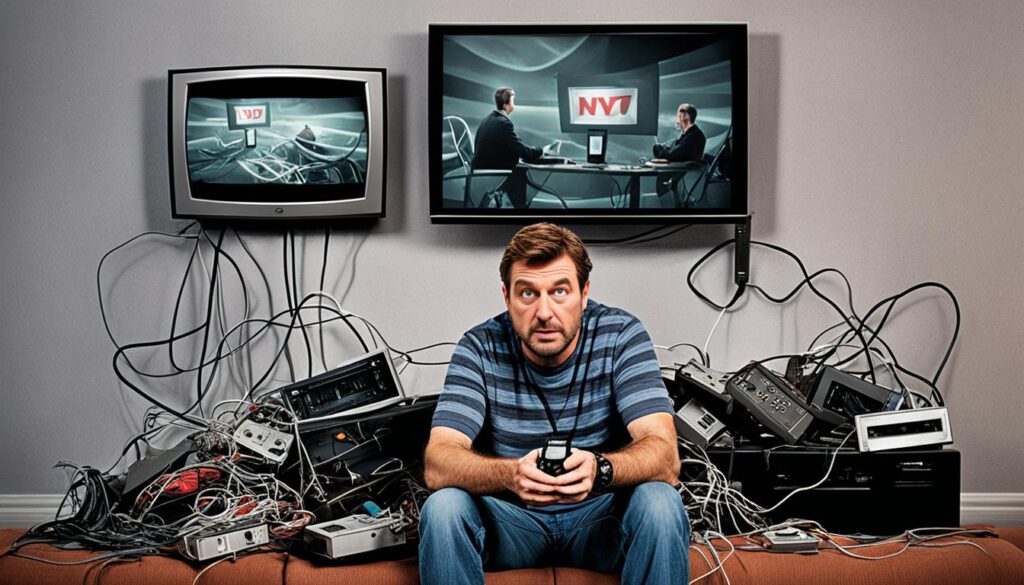
How to Choose an IPTV Provider
When it comes to embracing the world of IPTV, selecting the right provider is crucial. With numerous options available, it’s important to consider a variety of factors to ensure you make an informed decision. Here are the key aspects to evaluate when choosing an IPTV provider:
1. Variety of Content
One of the main advantages of IPTV is the wide array of content it offers. Look for a provider that offers a diverse range of channels, including your favorite sports, movies, shows, and international content. Ensure the provider caters to your specific interests and preferences, allowing you to enjoy a rich and personalized viewing experience.
2. Pricing Plans
While cost shouldn’t be the sole determining factor, it’s essential to consider pricing plans when choosing an IPTV provider. Compare the subscription fees and packages offered by different providers. Look for plans that offer a balance between affordability and a comprehensive selection of channels and content. Take advantage of free trials, if available, to gauge the value for money.
3. User Interface
A user-friendly interface is key to enjoying a seamless IPTV experience. Evaluate the provider’s user interface for its intuitiveness and ease of navigation. Look for features such as personalized recommendations, easy content discovery, and the ability to customize your viewing preferences. A well-designed user interface ensures you can effortlessly explore and access the content you desire.
4. Service Reliability
Reliability is a vital aspect of any IPTV service. Research customer reviews, ratings, and testimonials to assess the reliability of the provider. Look for features such as minimal buffering, consistent streaming quality, and reliable customer support. A reliable IPTV provider ensures uninterrupted access to your favorite content, allowing you to fully immerse yourself in the entertainment experience.
Remember, IPTV providers and their offerings can vary significantly, so take the time to evaluate and compare different options. Prioritize features that align with your preferences and needs, ensuring an enjoyable and tailored IPTV experience.
| Factors to Consider | Provider A | Provider B | Provider C |
|---|---|---|---|
| Variety of Content | ✓ | ✓ | ✓ |
| Pricing Plans | ✓ | ✓ | ✓ |
| User Interface | ✓ | ✓ | ✓ |
| Service Reliability | ✓ | ✓ | ✓ |
Conclusion
The revolution of IPTV has completely transformed the way we consume media, opening up endless entertainment possibilities. With its seamless streaming, on-demand content, and personalized viewing experiences, IPTV has become the future of television consumption. Embracing the IPTV revolution means unlocking new opportunities for creativity, connectivity, and engagement in the world of streaming TV and on-demand video.
As IPTV continues to advance and innovate, it will play a central role in shaping the future of television. With advancements in streaming technology, like 4K and 8K resolution, high dynamic range (HDR), and the integration of artificial intelligence (AI) and virtual reality (VR), the possibilities for interactive and immersive entertainment experiences are boundless.
Don’t miss out on the IPTV revolution. Embrace this new era of entertainment and immerse yourself in a world of endless possibilities. Say goodbye to traditional cable TV limitations and welcome a future where you have the power to control what, when, and how you watch your favorite shows and content. Experience the IPTV revolution and redefine your television consumption today.
FAQ
What is IPTV?
How does IPTV work?
What are the benefits of IPTV?
Can I watch IPTV on any device?
Do I need a high-speed internet connection for IPTV?
How do I choose an IPTV provider?
Is IPTV legal?
Can I record and pause live TV with IPTV?
How much does IPTV cost?
